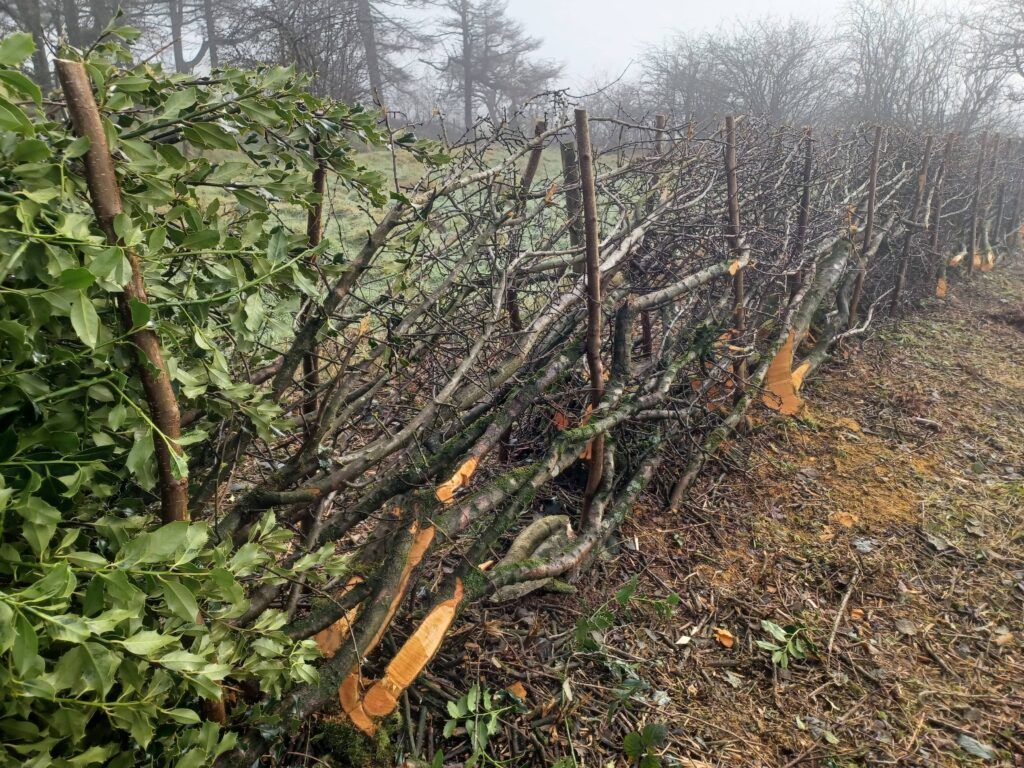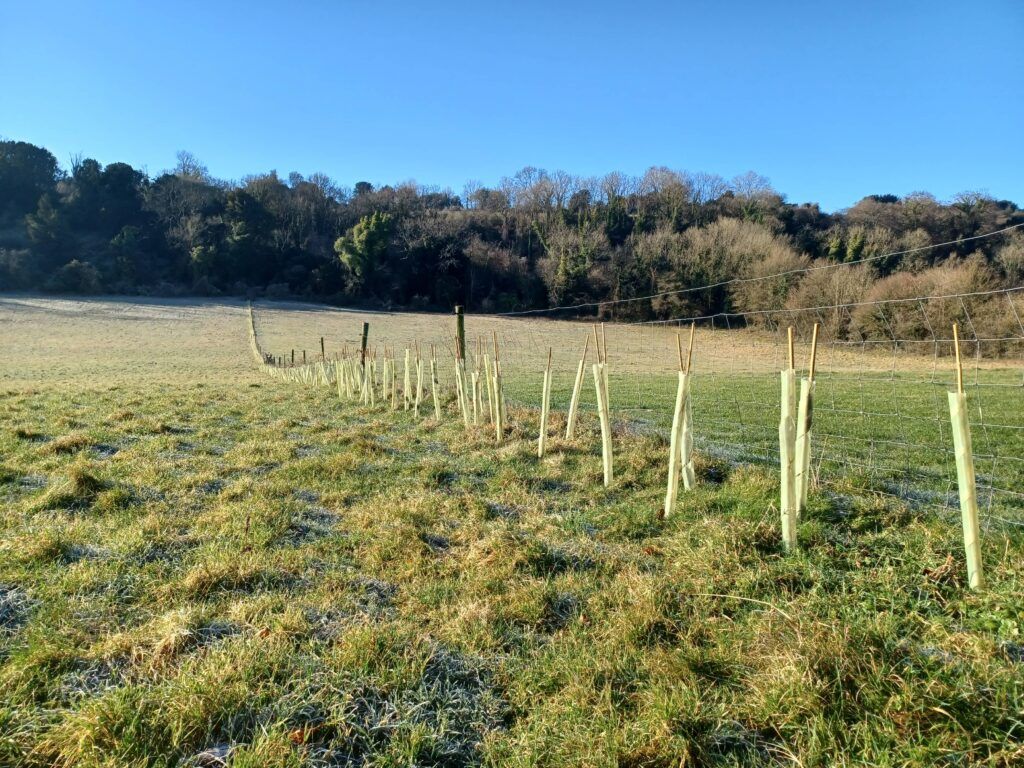“The recent freeze to these capital grants has undermined the financial security landowners vitally depended on. It’s a huge step backwards that will damage our chances of preventing further loss of this vital countryside network and the ambition to extend and improve it.”
Hedgerows need our help
We’ve had hedgerows for almost as long as we’ve had farming. For the majority of this time their main purpose was providing numerous on-farm benefits: stock control, stock shading, wind shelter, diverse livestock browse, added biosecurity, pollinators, pest control, and soil protection.
More recently we’ve turned to hedgerows to help us solve wider, graver issues – problems affecting society as a whole. We’ve begun to appreciate our hedgerow network for its role sequestering carbon, reducing flooding, filtering pollution and supporting an incredible diversity of wildlife.
Hedgerows really are the Swiss army knife of the countryside!
But the survival of our hedgerows depends on their periodic rejuvenation – and the support which underpins that rejuvenation is under threat. Once every generation a hedge needs laying or coppicing to give it another life-time. Without this, their structure declines and they’re eventually lost.
Why did we stop hedgelaying?
Hedgelaying used to be a routine part of a farmer’s year; ‘hedging and ditching’ was core winter work when we had more labour on farms. But societal changes caused a significant drop in farm workers after the war, and it was no longer possible to do this in-house. Hiring a professional to lay hedges became too expensive for most farms to shoulder, so hedges largely dropped out of this lifecycle management. They’ve been steadily declining in condition ever since; either lost to neglect or structural decline due to too many years of trimming.

It took a long time for the Government to recognise that lack of rejuvenation was the root cause of hedgerow decline, and that no amount of trimming adjustments in stewardship schemes would help solve the problem. But, in recent years, this has been better understood. The availability of grants in England to support vital restoration work has been enough to make this work financially viable again.
But the recent freeze to these capital grants (including hedgelaying, coppicing, planting and gapping up) has undermined that financial security landowners vitally depended on. It’s a huge step backwards that will damage our chances of preventing further loss of this vital countryside network and the ambition to extend and improve it.
Unintended consequences
We commend the Government for its ambitious targets on climate and biodiversity, including planting and restoring 45,000 miles of hedge in England by 2050. But these plans are now under threat by the capital grants freeze:
- Industries such as hedgelaying and tree nurseries are under financial strain due to cancelled hedge work this season, and uncertainty for the next . These are industries that need increased capacity not hamstringing, if we stand any chance of meeting our hedge targets.
- The capital grants freeze has set us back one entire planting and rejuvenation season. We can’t afford to slow down progress towards these goals.
- The unexpected pull of resources erodes farmers’ trust in the grants system which will jeopardise vital Environmental Land Management scheme (ELMs) uptake, potentially pushing farmers to resort to wildlife-threatening intensification to make up financial shortfalls.
- The lack of rejuvenation grant options for farmers undermines the good work that the hedgerow actions subsequently coppice/lay. There needs to be confidence that the grant schemes will be available in the long-term if these management actions are to be entered into. The SFIs provides significantly less value for money without access to the capital grants.
PTES has written to the Secretary of State to call for the immediate return of these essential hedgerow grants. Positive conservation action will grind to a halt without them. Please also consider writing a letter urging the grant funding is restored immediately.
PTES and hedgerows
PTES works extensively with farmers to support their transition to essential lifecycle management. Only when hedgerows are in a healthy condition do they live up to their potential delivering all the benefits they’re capable of; including benefits to the wildlife that depends on them.

We deliver in-person training workshops to farm cluster groups, run the free Healthy Hedgerows rapid assessment app which delivers management advice to famers across the country, and create materials to support farmers make the right hedge management decisions for them and their farms. All this work is less effective if farmers don’t have access to financial resources needed to act on this advice.
We expect a lot from hedges; their role in carbon sequestration, flood mitigation and biodiversity restoration are public goods, so it’s only fair we contribute to the costs of their ongoing restoration.
Outside of England
Whilst we have a revised version of the SFS Universal Actions in Wales, we’re still waiting to hear how hedge rejuvenation options will be tackled, which will presumably be in the Optional Actions scheme, which is yet to be released.
Similarly, we’re still waiting to see what the Scottish and Northern Irish policy changes have in store for hedges. My hope is that they take note of both the successes and struggles of the ELMS and SFIs schemes to swiftly develop a system that supports both farmers and wildlife.
Written by Megan Gimber, Key Habitats Officer at People’s Trust for Endangered Species
